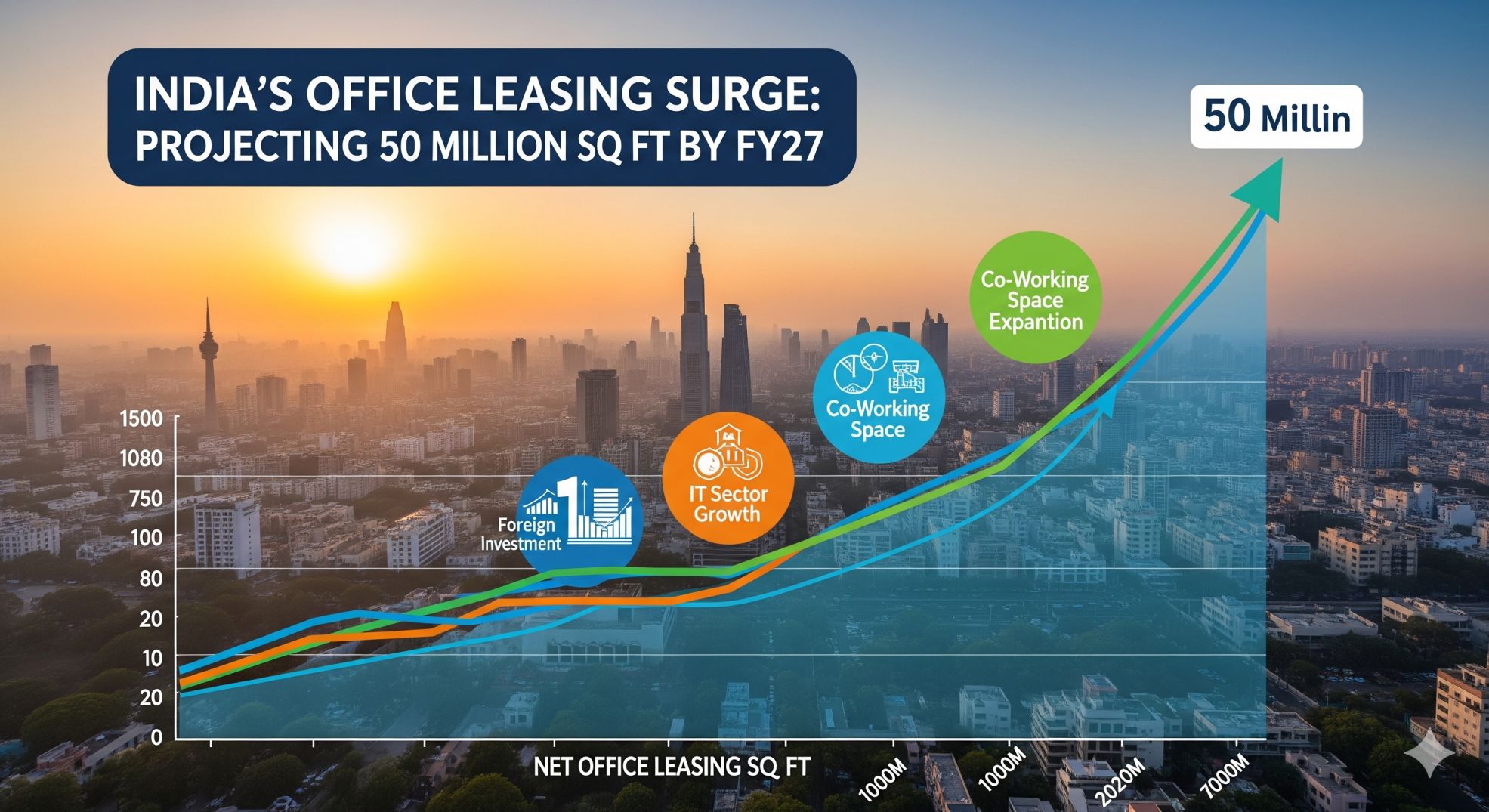India’s office leasing market is poised for a fresh milestone, with ratings agency Crisil projecting net annual leasing of Grade-A office space to exceed 50 million square feet by fiscal 2027 — an all-time high that reflects a sustained rebound in occupier demand.
Analysts say the upswing is being fuelled by a combination of factors: a pullback in permanent remote work as companies push for more in-office days, rapid expansion by global capability centres (GCCs), and hiring by technology, BFSI and engineering firms that continue to take space across India’s major markets. Broader macro stability and improving corporate confidence are also helping occupiers accelerate space decisions.
Market data underlines the momentum. Industry reports show gross leasing and absorption in the first half of 2025 already running at elevated levels — putting the sector on track for one of its busiest years on record. Consultancy tallies from multiple brokers indicate gross leasing could surpass 90 million sq ft for the full year, underscoring the strength of demand even as new supply comes through.
The expected rise in net leasing carries immediate benefits for developers and investors: lower vacancy, firmer rental momentum in select micro-markets and improved cash flows that can support balance-sheet repair and more disciplined new-supply launches. Crisil and other rating houses say healthier leasing trends will help stabilise credit profiles for office landlords and ready developers to monetise projects with greater predictability.
That said, risks remain. Execution of new project supply, localized oversupply in some submarkets, and any reversal in corporate hiring could blunt momentum. Market watchers also caution that the quality of demand matters — large, long-term leases by GCCs and enterprise clients will be far more value-accretive than short-term flex or co-working deals.
Regional dynamics will shape the map of gains. Mumbai and the National Capital Region are expected to see sharper vacancy compression, while Bengaluru, Hyderabad and Pune continue to attract sizable technology and engineering occupiers. The interplay between fresh supply and occupier preferences will determine which cities capture the lion’s share of the forecasted leasing uptick.
If trends hold, India’s office market will not only set new leasing records but also signal a structural recovery in demand for Grade-A space — a development that could have wide-ranging implications for investment flows, urban office rents and the development pipeline over the next two years.










